The PACIFIC MAIL STEAMSHIP COMANY was existing for "just" one hundred years and was in her heydays a backbone for the development of the US West.
The PACIFIC MAIL STEAMSHIP COMPANY was founded April 18, 1848, as a joint stock company under the laws of the State of New York by a group of New York City merchants, William H. Aspinwall, Edwin Bartlett, Henry Chauncey, Mr. Alsop, G.G. Howland and S.S. Howland. These merchants had acquired the right to transport mail under contract from the United States Government from the Isthmusof Panama to California awarded in 1847 to one Arnold Harris.
The company was sold 1938 last to AMERICAN PRESIDENT LINES, existing only on the paper, was closed down in 1949.
by Earl of Cruise
The PACIFIC MAIL STEAMSHIP COMPANY was founded April 18, 1848, as a joint stock company under the laws of the State of New York by a group of New York City merchants, William H. Aspinwall, Edwin Bartlett, Henry Chauncey, Mr. Alsop, G.G. Howland and S.S. Howland. These merchants had acquired the right to transport mail under contract from the United States Government from the Isthmusof Panama to California awarded in 1847 to one Arnold Harris.
The company was sold 1938 last to AMERICAN PRESIDENT LINES, existing only on the paper, was closed down in 1949.
by Earl of Cruise
CALIFORNIA,
PACIFIC MAIL's first ship - Source: Wikipedia
CALIFORNIAwas the first steamer built by the PACIFIC MAIL STEAMSHIP COMPANY and she was launched May 19, 1848. She sailed from New York for Panama, via Cape Horn, on October 6, 1848. The CALIFORNIA arrived at Panama January 17, 1849 and steamed into San Francisco February 28, 1849. She was deluged with additional argonauts at Panama and upon arrival at San Francisco her entire crew, save the Captain and one of the engine room boys, deserted for the gold fields.
CALIFORNIAwas the first steamer built by the PACIFIC MAIL STEAMSHIP COMPANY and she was launched May 19, 1848. She sailed from New York for Panama, via Cape Horn, on October 6, 1848. The CALIFORNIA arrived at Panama January 17, 1849 and steamed into San Francisco February 28, 1849. She was deluged with additional argonauts at Panama and upon arrival at San Francisco her entire crew, save the Captain and one of the engine room boys, deserted for the gold fields.
In the years before
steamships, clipper ships provided passage from the East Coast to the West
Coast by way of Cape Horn. In 1851 the FLYING CLOUD, true to its name,
carried letters and passengers from New York around Cape Horn to San Francisco
in a record-breaking 89 days.
For
a long time, the clippers, the crest of sailing sail vessels, an US
American invention, have been the only way around Cape Hoorn to
California, if one did not wanted going through the continent,
advertising for sailings - Source: Wikipedia
However, a three-month journey across the ocean was
not fast enough for those eager to make their way to
California following the discovery of gold there in 1848. Nor was it fast
enough for those already in California anxiously awaiting news from home.
Responding to the jump in demand, coastal steamers quickly became the central
communication link between the East and West Coasts.
Wells Fargo tage Coach, in such coaches passengers and mail was carried across the continent - Source: Wikipedia
Another option had
been the mail coaches, e.g. WELLS FARGO & COMPANY, across the plains
and mountains. A tedious and dangerous route ... According to Hollywood, the
set of ever attacing Indians, robbery, murder, and heroes.
For mail to the West, the US Mail office organized a transportation by horse riders, the PONY EXPRESS, similar to that what Thurn und Taxis organized in the late middle ages in the Holy Roman Empire.
It was a tremendous task for US MAil and the entrepreneurs of these adventurous businesses organizing the secure and safe trandsport of mail and alongside passengers.
For mail to the West, the US Mail office organized a transportation by horse riders, the PONY EXPRESS, similar to that what Thurn und Taxis organized in the late middle ages in the Holy Roman Empire.
It was a tremendous task for US MAil and the entrepreneurs of these adventurous businesses organizing the secure and safe trandsport of mail and alongside passengers.
The transcontinental PONY EXPRESS route - Source: Wikipedia (original size)
During the California Gold Rush in early 1848 at Sutter's Mill near Coloma, California, financiers and
entrepreneurs from all over North America and the world flocked to
California, drawn by the promise of huge profits. Vermont native Henry Wells and New Yorker William G. Fargo watched the California economy boom with keen interest. Before
either Wells or Fargo could pursue opportunities offered in the Western United States, however, they had business
to attend to in the Eastern United States.
Advert for the PONY EXPRESS service - Source: Wikipedia
Wells, founder of
Wells and Company, and Fargo, a partner in Livingston, Fargo and Company, and
mayor of Buffalo, NY from 1862 to 1863 and again from 1864 to 1865, were
major figures in the young and fiercely competitive express industry. In 1849 a new rival, John Warren Butterfield, founder of
Butterfield, Wasson & Company, entered the express business. Butterfield,
Wells and Fargo soon realized that their competition was destructive and
wasteful, and in 1850 they decided to join forces to form the American Express Company.
Soon after the
new company was formed, Wells, the first president of American Express, and
Fargo, its vice president, proposed expanding their business to California.
Fearing that American Express's most powerful rival, Adams and Company (later
renamed Adams Express Company), would acquire a monopoly in
the West, the majority of the American Express Company's directors balked.
Undaunted, Wells and Fargo decided to start their own business while
continuing to fulfill their responsibilities as officers and directors of
American Express.
Source: Wikipedia
|
Early in 1848, congress authorized the organization of 2 steamship lines
to transport US Mail, between New York and San Francisco. The first company was the UNITED STATES MAIL STEAM LINE, running between, New York,
Charleston, Savannah, Havana (Cuba), New Orleans, Chagres (Nueva Granada) and
return. The second company was the PACIFIC MAIL STEAMSHIP COMANY and it
ran between Panamá, San Francisco, Astoria, and return.
This map of the Americas is used in the exhibit of the SMITHONIAN NATIONAL POSTAL MUSEUM to display the routes
used by ships carrying mail, cargo and passengers from the East to the
West coast - courtesy: SMITHONIAN NATIONAL POSTAL MUSEUM
The first three
steamships constructed for Pacific Mail were the CALIFORNIA,
the OREGON,
and the PANAMA.
The board of PACIFIC MAIL STEAMSHIP COMPANY initially believed it would be
transporting mail, some passengers and agricultural goods along and to the West
Coast only. But just as operations began, gold was found in the Sierra Nevada. Imediately business boomed
almost from the start. During the California Gold Rush in 1849, the company was
a key mover of goods and people and played a key role in the growth of San
Francisco, California.
San Francisco in 1850 - own collection, copy from a comic book
It is depicting what has been found in the Bay area: ships, wasted by their crews for the Gold Fields, used as foundations for needed houses in the rapidly growing port city
It is depicting what has been found in the Bay area: ships, wasted by their crews for the Gold Fields, used as foundations for needed houses in the rapidly growing port city
In addition to
their maritime activities PACIFIC MAIL STEAMSHIP COMPANY also ran some of the
earliest steamboats on the Sacramento
and San Joaquin Rivers, between San Francisco, Sacramento, and Stockton. Domingo Marcucci who came from Philadelphia in the Pacific Mail steamship OREGON with
a knocked-down steamboat in its hold, started a shipyard in San Francisco on
September 18, 1849. It was located on the beach at Happy Valley, at the foot of Folsom
Street, east of Beale Street. Marcucci's company assembled the CAPTAIN SUTTER in six weeks. Built for the ASPINWALL STEAM TRANSPORTATION LINE, owned by George W. Aspinwall, brother of William Henry Aspinwall, one of the
founders of PACIFIC MAIL STEAMSHIP COMPANY. CAPTAIN SUTTER was one of the first steamboats that ran between San
Francisco and Stockton, in 1849.
"Steamer CAPTAIN SUTTER. this steamer, well known to travelers on the Upper Sacramento as one of
the most regular of the Colusa packets, appeared at the Levee last week, in
an entirely new dress. She has been on the dock at San Francisco for sometime
past, undergoing repairs and improvements, and now has a spacious cabin
containing four state rooms and thirty commodious berths. This, with other
additions which have been made at an outlay of over four thousand dollars,
renders her one of the best steamers in the up-river trade. The Capt. S.
resumes her trips to-morrow, taking her former days of departure, Wednesday
and Saturday. Capt. Littleton continues to command the Sutter, which, to
those who know him, is a sufficient guarantee of receiving that courtesy and
attention proverbial with Mississippi steamboat captains."
Source: Wikipedia
|
Also for the
Pacific Mail, Marcucci next converted the 153 ton side-wheel steamboat EL DORADO that had been rigged as a 3
masted schooner for the trip around Cape Horn,
to be used for the Sacramento run. Subsequently in March 1850, for the same
company, he assembled the GEORGIANA,
a small 30 ton side-wheel steamboat made in Philadelphia, knocked down and sent
by sea also for the Sacramento run.
Shortly after GEORGIANA
was launched, in April 1850, the
steamer pioneered the short cut route through the Delta between Sacramento
and Stockton, through, the slough, which connects the Sacramento River
with the San Joaquin River through the Mokelumne River. The route was named
the Georgiana Slough after the steamboat.In May
1850, GEORGIANA
pioneered the route from Stockton up the San Joaquin River and Tuolumne River
to Tuolumne City.
Subsequently, her captain, began a weekly service from Stockton to San Joaquin City Grayson City and Tuolumne City timed to leave
after the arrival of the CAPTAIN
SUTTER from San Francisco. Following a dry summer, the low water
in the river grounded the GEORGIANA
ending the ambitions of Tuolumne City to be a river port until the 1860s.
With overwhelming competition by the larger steamers of SIMMONS, HUTCHINSON
& COMPANY and the flood of other steamboats arriving from the East
causing a decline in fares, in the fall of 1851 Aspenwall sold out. Georgiana
was sold and by June 1851 was steaming between San Francisco and Sonoma, 3 times a week for Engels, Hooper and
Company.
Source: Wikipedia
|
In 1850, the PACIFIC
MAIL STEAMSHIP COMPANY established a steamship line competing with the U.S. MAIL STEAMSHIP COMPANY between NewYork City and Chagres. George Law placed an opposition line of
steamers (ANTELOPE, COLUMBUS, ISTHUMUS, REPUBLIC) in the Pacific, running from Panama to San Francisco. In April 1851, the rivalry was ended when the U.S. MAIL STEAMSHIP COMPANY purchased PACIFIC MAIL STEAMSHIP COMPANY steamers on the Atlantic side, and George Law sold his new company and its
ships to the PACIFIC MAIL.
One of the company's steamships, the WINFIELD SCOTT, acquired when the NEW YORK and CALIFORNIA STEAMSHIP COMPANY went out of business, ran aground on Anacapa Island in 1853.
One of the company's steamships, the WINFIELD SCOTT, acquired when the NEW YORK and CALIFORNIA STEAMSHIP COMPANY went out of business, ran aground on Anacapa Island in 1853.
Advert showing the combined U.S. MAIL STEAMSHIP COMPANY and PACIFIC MAIL STEAMSHIP COMPANY mail and passenger
service - Source: California State Library
During the American Civil War the ships of the PACIFIC MAIL,
that carried the gold and silver of the western mines to the eastern states
were under threat from the Confederate Navy in the form of commerce raiders, and several plots to seize one of
their steamships for its precious cargo or to convert it into a raider to
capture one of its other ships with such cargo. After one of these plots, that
of the Salvador Pirates came to light, to prevent any
further attempts to seize Pacific coast shipping, General McDowell ordered each
passenger on board American merchant steamers to surrender all weapons when boarding
the ship and every passenger and his baggage was searched. All officers were
armed for the protection of their ships. Detachments of Union soldiers sailed
with PACIFIC MAIL steamers.
In 1867, the company launched the first regularly scheduled trans-Pacific steamship service with a route between San Francisco, Hong Kong, and Yokohama, and extended service to Shanghai. This route led to an influx of Japanese and Chinese immigrants, bringing additional cultural diversity to California.
In 1867, the company launched the first regularly scheduled trans-Pacific steamship service with a route between San Francisco, Hong Kong, and Yokohama, and extended service to Shanghai. This route led to an influx of Japanese and Chinese immigrants, bringing additional cultural diversity to California.
The history
of Chinese in US America or the history of ethnic Chinese in the United States relates to the three major waves of Chinese immigration to the United States with
the first beginning in the 19th century. Especially, when the Gold Rush
started. Chinese immigrants in the 19th century worked as laborers,
particularly on the transcontinental railroad, such as the Central Pacific Railroad. They also
worked as laborers in the mining industry, and suffered racial discrimination
at every level of society. While industrial employers were eager to get this
new and cheap labor, the ordinary white public was stirred to anger by the
presence of this "yellow peril". Despite the provisions for equal
treatment of Chinese immigrants in the 1868 Burlingame Treaty, political and labor
organizations rallied against the immigration of what they regarded as a
degraded race and "cheap Chinese labor". Newspapers condemned the
policies of employers, and even church leaders denounced the entrance of
these aliens into what was regarded as a land for whites
only. So hostile was the opposition that in 1882 the United States Congress eventually passed
the Chinese Exclusion Act, which prohibited
immigration from China for the next ten years. This law was then extended by
the Geary Act in 1892. The Chinese Exclusion Act was the only U.S. law ever to prevent immigration and naturalization on the basis of race.
These laws not only prevented new immigration but also brought additional
suffering as they prevented the reunion of the families of thousands of
Chinese men already living in the United States (that is, men who had left
China without their wives and children); anti-miscegenation laws in many states
prohibited Chinese men from marrying white women.In 1924 the law barred
further entries of Chinese; those already in the United States had been
ineligible for citizenship since the previous year. Also by 1924, all
Asian immigrants (except people from the Philippines,
which had been annexed by the United States in 1898 after the
US-Spanish War, which made the USA a colonial power) were utterly excluded by
law, denied citizenship and naturalization,
and prevented from marrying Caucasians or owning land.Only since the 1940s
when the United States and China became allies during WW II,
did the situation for Chinese Americans begin to improve, as
restrictions on entry into the country, naturalization and mixed marriage
were lessened. In 1943, Chinese immigration to the United States was once
again permitted - by way of the Magnuson Act - thereby repealing 61 years of official racial discrimination
against the Chinese. Large-scale Chinese immigration did not occur until 1965
when the Immigration and Nationality Act of 1965
lifted national origin quotas. After WW II, anti-Asian prejudice began to
decrease, and Chinese immigrants, along with other Asians (such as Japanese,
Koreans, Indians and Vietnamese), have adapted and advanced. Currently, the
Chinese constitute the largest ethnic group of Asian Americans (about 22%), and have confounded earlier expectations that they
would form an indigestible mass in American society. For example, many Chinese Americans of American birth may know little or nothing about traditional Chinese culture, just as European Americans and African Americans may know little or nothing about the original cultures of their
ancestors. As of the 2010 United States Census, there are
more than 3.3 million Chinese in the United States, about 1% of the total
population. The influx continues, where each year ethnic Chinese people from
the People's Republic of China, Taiwan and to a lesser extent Southeast Asia move to the United States, surpassing Hispanic and Latino immigration by
2012.
Source: Wikipedia
|
As the CENRAL PACIFIC and UNION PACIFIC railroads met in Utah in 1869, the profitability of the Pacific
Mail on the run from Panama to San Francisco ended. Many of its ships were sold
or put on other routes.
1915 Advertisement showing new ships in Trans Pacific
service - Source: Wikipedia
While docked at San José de Guatemala, the PACIFIC MAIL steamship ACAPULCO was involved in the Barrundia Affair of 1890. General Juan Martín Barrundia, a Guatemalan rebel
general wanted by the Guatemalan government, was killed aboard ship after an
attempted arrest by Guatemalan police, who hauled down the American flag and
raised the Guatemalan flag in its place. The affair led to the recall of the
U.S. Minister to Central America, Lansing Bond Mizner, by President Benjamin Harrison.
The company was a
charter member of the Dow Jones Transportation Average.
The Dow
Jones Transportation Average (DJTA,
also called the "Dow Jones Transports") is a U.S.
stock market index from S&P Dow Jones Indices of the
transportation sector, and is the most widely recognized gauge of the
American transportation sector. It is the oldest stock index still in use,
even older than its better-known relative, the Dow Jones Industrial Average (DJIA).
Source: Wikipedia
|
PACIFIC MAIL advertising poster promoting sailings to Asia - Source
Above and below, PACIFIC MAIL´s
broshure advertising their sailings between New York and San Francisco
via Panama Canal - courtesy Timetable Images
In 1925, the
company was purchased by Robert Dollar, owner of DOLLAR STEAMSHIP CCOMPANY. With the
government bail-out of the DOLLAR LINE in 1938, ownership passed to AMERICAN PRESIDENT LINES, but by this
time, PACIFIC MAIL STEAMSHIP COMPANY essentially existed only on paper. It was formally closed down in 1949, after
just a century of existence.
PacificMail - Under the American Flag Around the World (below: six page company history
feature in Pacific Marine Review, July 1920)
Ships of the PACIFIC MAIL STEAMSHIP COMPANY in chronological order
The nomenclatura of PACIFIC Mail is quite unleveled, as the company choose no "leading" naming scheme. But it was a common parctice in those days, when CI / Corporate Identity was "unknown".
Source: Wikipedia
It has taken a long time till US shipbuilders skipped wodden hulls and paddles for propulsion. It is caused by over conservative standings. Wodden hulls had been considered as more seaworthy than iron. It was on one side the thought, that iron will be corroded by saltwater. Further wodden hulls had been considered as better reacting on moves of waves, better than stiff iron. But on the other hand wodden hulls, even if strengthend by iron ribs and stiffenings, as used in GREAT WESTERN, the steam engines have an enormous impact on the structural integrety of the hull, causing high maintenence costs.
Numerous ships of PACIFIC MAIL had been wodden hulled paddle steamers, while other, European lines ordered first iron hulled vessels, even with paddle wheels but most srew propelled. Only when it came to steel hulled vessels, US shipbuilders tried to catch up, but technology was going fast forward in those days.
Despite the wodden hulls, used for long, the vessels mainly had a deckhouse on the main deck, extenting the passengercapacity, but too and foremost gave more comfort to the passengers, and a promenade! Prior to any Transatalntic liner!
- CALIFORNIA (1848–1866, 1872–1874) Built for the company,
it was launched May 19, 1848 by William H. Webb, New York. It left New York on
October 6, 1848 for Valparaiso, Panama City and San Francisco and then operated between San
Francisco and Panama regularly until 1854. She was used as a spare steamer
at San Francisco in 1856 and at Panama City in 1857. She made San
Francisco to Panama City voyages for Pacific Mail in 1860, 1861 and 1866
and was later sold to the CALIFORNIA, OREGON & MEXICO STEAMSHIP COMPANY. Returned to Pacific Mail in
1872, she was sold to GOODALL, NELSON & PERKINS in 1874.
Steamer CALIFORNIA - Source: Wikipedia
- OREGON (1848–1861): Built for the company, it was launched on August 5, 1848 and sailed from New York for San Francisco on December 8, 1848, calling at Panama City and arriving at San Francisco on April 1, 1849. Used regularly on the San Francisco to Panama City route until 1855 and made one further voyage in 1856. Subsequently used on the San Francisco to Columbia River service and was sold to HOLLADAY & FLINT in 1861.
- PANAMA (1848–1861) Built for the company, it was launched on July 29, 1848. She sailed from New York on February 15, 1849 and arrived San Francisco on June 4. She then sailed regularly between San Francisco and Panama City until 1853, made a single voyage in 1854 and in 1856–57 was used as a spare steamer at Panama City. From 1858 she was used on the San Francisco to Columbia River service, until she was sold to HOLLASAY & FLINT in February 1861. PANAMA was sold to the Mexican government in 1868 and was renamed the JUAREZ.
- TENNESSEE (1849–1853)
Launched in 1848. Purchased by PACIFIC MAIL STEAMSHIP COMPANY, she left
New York on December 6, 1849, arrived at Panama City on March 12, 1850 and
San Francisco on April 14. She operated between San Francisco and Panama
City until March 6, 1853 when she went aground in dense fog near San
Francisco and broke up. Her passengers, mail and baggage were saved.
Steamer TENNESSEE - Source: California State Library
- CAROLINA (1849–1854) Completed in December 1849, she was sold to PACIFIC MAIL STEAMSHIP COMPANY and sailed from New York for San Francisco on January 9, 1850 arriving in San Francisco on May 7, 1850. She was used on the San Francisco to Panama City service until the end of 1851. Sold for service in China in 1854.
- UNICORN (1850–1853) Built in 1838, she sailed from New York for California and arrived at San Francisco on December 1, 1849, having been chartered by PACIFIC MAIL STEAMSHIP COMPANY, who purchased her in 1850. She operated occasionally between San Francisco and Panama City until April 1853 when she was sold and returned to England via Australia.
- COLUMBIA (1850–1862) Built for the company in 1850 and sailed from New York for San Francisco on October 15, 1850. She was intended for the mail service between San Francisco and Astoria, Oregon, but the amount of business between San Francisco and Panama City caused her to be used in that service occasionally between 1851 and 1854. Sold to Chinese owners in 1862.
- ECUADOR (1850–1853) Built for the Pacific Steam Navigation Company in 1845 for the Callao - Guayaquil - Panama City service she made one voyage from Panama City to San Francisco in July–August 1850. In 1850 she was sold to the PACIFIC MAIL STEAMSHIP COMPANY, and was wrecked at Coquimbo in 1853.
- CRESCENT CITY and EMPIRE CITY (1850–1851) Purchased for New York City to Chagres voyages; sold in 1851 to U.S. MAIL STEAMSHIP CCOMPANY.
- SARAH SANDS (1850–1851) Built in 1846, she operated between Liverpool and New York until chartered to the Empire City Line and operated from San Francisco to Panama City until October 1850 when she was purchased by the PACIFIC MAIL STEAMSHIP COMPANY. She continued operating on that route until July 1851. She was then sold and returned to England via Australia and resumed transatlantic voyages to Canada until chartered by the British government for transporting troops to the Crimea and later India in response to the Indian Mutiny. While on the way to India in 1857 the ship suffered a notable fire, but survived only to be later wrecked in India.
- NORTHENER (1850–1860) Built in 1847, she arrived in San Francisco on August 15, 1850, and made one voyage to Panama City for the Empire City Line before being sold to the PACIFIC MAIL STEAMSHIP COMPANY in December 1850. She was used on the San Francisco to Panama City service until May 1853. She was then used as a spare steamer and later placed on the San Francisco – Columbia River and Puget Sound service. A state historic landmark, cross and monument mark the spot where she was wrecked near Humboldt Bay on January 7, 1860 with the loss of 38 lives.
- FREMONT (1851–1861) Built 1850, she was purchased by PACIFIC MAIL STEAMSHIP COMPANY and sent to San Francisco in 1851. Used on the San Francisco – Panama City service until spring 1852, she was then used on the San Francisco to Columbia River service. In February 1861 she was sold to Flint & Holladay for their coastal routes.
- REPUBLIC (1851–1861) In early 1850 she was sold to Howard & Aspinwall and was sent to the Pacific coast, arriving at Panama City on July 15, 1850. She then entered service between Panama City and San Francisco for George Law. Sold to the PACIFIC MAIL STEAMSHIP COMPANY in January 1851, and used mostly on coastal services with occasional voyages to Panama City until 1855. Sold to Holladay & Flint in 1861.
- ISTHMUS (1851–1854) Formerly used between San Francisco and Panama for George Law between May 4, 1850 and April 1851, she was then purchased by PACIFIC MAIL STEAMSHIP COMPANY. She made occasional Panama City voyages until late 1853, when she was put on the San Francisco to San Diego service. She was sold in January 1854 and renamed SOUTHENER.
- COLUMBUS (1851–1854) Sailed from New York on February 12, 1850 and arrived San Francisco June 6, 1850. Sold to the PACIFIC MAIL STEAMSHIP COMPANY in 1851, it operated on the San Francisco to Panama City route until 1854. Chartered to the U. S. Navy for a while in 1854 she was then sold to the PANAMA RAILROAD COMPANY and operated on the west coast of Central America.
- ANTELOPE (1851) Operated between San Francisco and Panama between October 1850 and March 1851 for George Law. Sold to PACIFIC MAIL STEAMSHIP COMPANY in the spring of 1851, and resold for use on the Sacramento River.
- GOLDEN GATE (1851–1862)
Built and launched for the PACIFIC MAIL STEAMSHIP COMPANY on January 21,
1851, she entered the San Francisco to Panama City service in November
1851. She stayed in this service until she was beached and was burned at
sea near Manzanillo, Mexico on July 27, 1862 with
the loss of 223 lives.
GOLDEN GATE entered the San Francisco to Panama City service in November 1851 and was lost off Manzanillo, Mexico on July 27, 1862 - Source: Wikipedia
- CONSTITUTION (1851): Built in 1850, she made a voyage between San Francisco and Panama for PACIFIC MAIL STEAMSHIP COMPANY in 1851.
- JOHN L. STEPHENDS Launched on September 21, 1852 for the PACIFIC MAIL STEAMSHIP COMPANY. She left New York for San Francisco on December 17, 1852 and arrived with passengers from Panama City on April 3, 1853. She continued the San Francisco to Panama route until October 1860. In 1864 she was sailing between San Francisco and the Columbia River. She was sold in 1878 to SISSON, WALLACE & Co., and went to Alaska, used as a floating cannery.
- SAN FRANCISCO (1853) Built in New York. Sank in the North Atlantic on maiden voyage in heavy weather with many casualties when the engines broke down.
- WINFIELD SCOTT (1853) Built and launched in October 1850. She
arrived at San Francisco in April 1852 and operated to Panama City until
April 1853 for the INDEPENDENT LINE, then
for the NEW YORK & SAN FRANCISCO STEAMSHIP COMPANY. She was then purchased by
the PACIFIC MAIL STEAMSHIP COMPANY in July 1853, but was then wrecked on Anacapa Island in thick fog when bound for Panama City on December 2, 1853.
There was no loss of life.
Advertsing for the WINFIELD SCOTT sailings - own collection
- SONORA (1853–1868) Built for the PACIFIC MAIL STEAMSHIP COMPANY, she was launched on 1 October 1853. She left New York on March 11, 1854 and arrived San Francisco on May 31. Used on the San Francisco to Panama City service until May 1863. She made one voyage to Panama City with troops in 1865 and was scrapped in 1868.
- ST.LOUIS (1854–1855, 1859–1878) Built and launched for PACIFIC MAIL STEAMSHIP COMPANY on February 1, 1854, she was chartered to the NEW YORK & HAVRE STEAM NAVIGATION COMPANY and sailed from New York for Havre on August 1, 1854. Sold to the U.S. Mail Steamship Company in August 1855 and made occasional New York to Aspinwall voyages between 1855 and 1859. Returned to PACIFIC MAIL STEAMSHIP COMPANY when the U.S. Mail Steamship Company dissolved, she sailed from New York on November 22, 1860 and arrived in San Francisco via Panama City on February 9, 1861. She then operated between San Francisco and Panama City until 1866. She was scrapped in 1878.
- GOLDEN AGE (1854–1862) Built for NEW YORK & AUSTRALIAN NAVIGATION COMPANY in 1853, she operated in Australian coastal services until May 12, 1854 when she sailed from Sydney for Tahiti and Panama City, arriving June 17. She was purchased by the PACIFIC MAIL STEAMSHIP COMPANY in August 1854, she entered the San Francisco to Panama City service in October 1854 and continued until 1869. Later transferred to the Yokohama to Shanghai service, she was sold to MITSUBISHI MAIL STEAMSHIP COMPANY in 1875 and renamed Hiroshima Maru.
- CORTES (1860–1861) In 1858–1859 she was sailing between San Francisco and Panama City for the NEW YORK & CALIFORNIA STEAMSHIP COMPANY and in 1860 on the same route for the ATLANTIC & PACIFIC STEAMSHIP COMPANY. She was purchased by PACIFIC MAIL STEAMSHIP COMPANY in December 1860, she entered its Panama service and in February 1861 was sold to FLINT & HOLLADAY who chartered her for service in China.
- ORIZABA (1860–1865, 1872–1875) a 1450-ton, wooden hull, side paddle wheel, two masted steamship with accommodation for 1,028 passengers. Launched on January 14, 1854 by Jacob A. Westervelt & Co, New York for MORGAN & HARRIS for the New York – New Orleans – Vera Cruz service. She made two New York – San Juan de Nicaragua sailings in Apr-May 1856 and was then sent to San Francisco, arriving Oct. 30th. She operated for Vanderbilt's NICARAGUA STEAMSHIP COMPANY until Feb.1857 and after Apr.1858 sailed from San Francisco to Panama for the NEW YORK & CALIFORNIA STEAMSHIP COMPANY. Purchased by PACIFIC MAIL STEAMSHIP COMPANY in 1860 and sailed the San Francisco – Panama City route between June 1, 1861 and April 1864. Sold to the CALIFORNIA STEAM NAVIGATION COMPANY in April 1865 and used on their San Francisco – Portland - Victoria service until 1867 when she was sold to HOLLODAY & BRENHAM. Purchased again by PACIFIC MAIL STEAMSHIP COMPANY in 1872 and by GOODALL, NELSON & PERKINS in 1875. She remained in coastal services throughout all these changes of ownership and was scrapped in 1887.
- UNCLE SAM (1860–1866) Launched in 1852, she passed through various hands until making one Panama City to San Francisco voyage for the ATALANTIC & PACIFIC STEAMSHIP COMPANY in January 1860. Later that year she was purchased and operated by the PACIFIC MAIL STEAMSHIP COMPANY. She made her last San Francisco to Panama Panama City voyage in December 1861 and was sold in February 1866 to JAMES HERMANN & COMPANY, Panama City.
- WASHINGTON (1860–1864) Built in 1847 she operated transatlantic services and then made New York to San Juan de Nicaragua and Aspinwall sailings until she was sold to the PACIFIC MAIL STEAMSHIP COMPANY in 1860. She arrived at San Francisco on October 24, 1860 and made two San Francisco to Panama City voyages before being laid up as unfit for the service. She was scrapped in 1864.
- CONSTITUTION (1861–1879) Built for the company, she was launched on May 25, 1861. She was chartered to the War Department in 1861–1862. On June 19, 1862 she sailed from New York for San Francisco. She sailed from then on between San Francisco and Panama City from 1862 to June 1869. She was scrapped at San Francisco in 1879.
- GOLDEN CITY Launched
January 24, 1863 for the PACIFIC MAIL STEAMSHIP COMPANY she entered the
San Francisco to Panama City service on August 13, 1863 and continued this
until 1869. She was lost on the coast of Baja California on February 10, 1870.
GOLDEN CITY - Source: California State Library
- COSTA RICA (1865–1875) COSTA RICA operated for Cornelius Vanderbilt from July 1864 until the summer of 1865 on the New York to Aspinwall service. Purchased by PACIFIC MAIL STEAMSHIP COMPANY, she was used on the same service until spring 1866. On April 1, 1867 she sailed from New York for Yokohama via the Cape of Good Hope and was then used on Pacific Mail's Yokohama to Shanghai service until 1875 when she was sold to Mitsubishi Mail Steamship Company and renamed GENAKI MARU.
- GUATEMALA (?–1864–?) PACIFIC MAIL STEAMSHIP COMPANY ship operating between Panama City and ports along the ooast of Central America in 1864 when it was the target of a Confederate Navy attempt to seize it.
- SAN SALVADOR (?–1864–?) PACIFIC MAIL STEAMSHIP COMPANY ship operating from Panama City in 1864 when it was the target of a Confederate Navy attempt to seize it.
- COLORADO (1864–1878)
Built for the PACIFIC MAIL STEAMSHIP COMPANY, launched on May 21, 1864 and
sailed from New York for San Francisco on April 1, 1865 with calls at Rio de Janeiro, Callao and Panama City. Used on the San Francisco to
Panama City service from summer 1865 to June 1869 with the exception of
some occasional voyages on the China route. Sold in 1878 and scrapped
1879.
PACIFIC MAIL´s COLORADO SENATOR at the old docks of PACIFIC MAIL SS Co - Source: California State Library
- HENRY CHAUNCEY
(1864–1877) Launched October 1864 for the PACIFIC MAIL STEAMSHIP COMPANY
and entered the New York to Aspinwall service on November 1, 1865 and
remained on this route until 1869. She burned at sea on August 16, 1871
off the Carolina Coast while on passage from New York to Kingston, Jamaica and Aspinwall with no loss
of life. The hull was rebuilt and she was eventually scrapped in 1877.
HENRY CHAUNSEY - courtsey California State Library
- ARIZONA (1865–1877) Built and launched for PACIFIC MAIL STEAMSHIP COMPANY on January 19, 1865. She commenced service between New York and Aspinwall on March 1, 1866 and continued until June 1869. In 1877 she was scrapped at San Francisco.
- MONTANA (1865–1876)
Launched February 25, 1865 for the PACIFIC MAIL STEAMSHIP COMPANY. She was
used on the San Francisco to Panama City service from October 1866 through
1869. She was sold to the COLORADO STEAM NAVIGATION COMPANY in 1874. However, later that year, Montana ran aground and had to
be towed back to San Francisco for 3 months of repairs. She caught fire
and sank near Guaymas, on December 14, 1876.
MONTANA - courtsey California State Library
- ATLANTIC (1865) In 1865 she made one New York to Aspinwall voyage for the PACIFIC MAIL STEAMSHIP COMPANY.
- BALTIC (1865) In 1865 she made one New York to Aspinwall sailing for PACIFIC MAIL STEAMSHIP COMPANY.
- HERMANN Built in 1848
for Transatlantic service, she was sold in 1858 operated on the west coast
of North America on various routes until the winter of 1862–1863 when she
made one San Francisco to Panama City voyage for the PEOPLE's LINE and was then
auctioned in 1866. Sold to PACIFIC MAIL STEAMSHIP COMPANY, she was
refitted and sent to Yokohama for use as a store ship on March 1, 1867. On
February 13, 1869 she was wrecked on Point Kwatzu with the loss of 330
lives.
HERMANN after rebuilding for OCEAN STEAM NAVIGATION COMPANY - courtsey Peabody Museum of Salem
- CHINA (1866–1883) Built for the Pacific Mail's
transpacific service and launched on December 8, 1866. Left New York for
San Francisco on July 1, 1867 and arrived in San Francisco on September
20, picking up passengers at Panama City on the way. She then entered the
transpacific service until 1883 when she was sold to Henry Villard.
CHINA of PACIFIC MAIL - Source: California State Library
- GREAT REPUBLIC (1867–1878) Built for the PACIFIC MAIL
STEAMSHIP COMPANY in 1867. She sailed from New York on May 18, 1867 for
Panama City, San Francisco and Japan and
arrived in Panama City on July 16. She made one Panama to San Francisco
voyage on July 2, arriving August 2, 1867 and then entered the San
Francisco to Hong Kong service. She was sold to P. B. CORNWALL in 1878
for the San Francisco to Portland route until she was wrecked on April 19,
1879 on Sand Island, Columbia River.
GREAT REPUBLIC - Source: California State Library
- ALASKA (1867–1879)
Launched November 27, 1867 for PACIFIC MAIL STEAMSHIP COMPANY service
between New York and Aspinwall. She served from August 2, 1868 until June
1869 and later was used on the San Francisco to Panama City and San
Francisco to Hong Kong services until 1879. She was rebuilt in
1882 and later became a coal hulk and store ship at Acapulco
until 1885.
ALASKA, after being blown ashore during the 1874 Hong Kong Typhoon. Photo by Lai Afong - Source: WikipediaOpening the photography, one may see the wodden hull
- JAPAN (1867–1874)
Launched on December 17, 1867 for the PACIFIC MAIL STEAMSHIP COMPANY she
sailed from New York on April 11, 1868 for Panama, San Francisco and
Yokohama. She arrived in San Francisco on July 3, 1868 and entered the San
Francisco to Hong Kong service. She burned at sea on 18 December 1874
between Hong Kong and Yokohama.
Pacific Mail Steam Ship Company's steamer Japan, built by Henry Steers - Source: California State Library
- AMERICA (1869–1872) Launched in 1869. It travelled around the Cape of Good Hope without passengers and used sail for a large part of the trip. At Singapore America began to pick up Chinese for steerage passage and eventually arrived in San Francisco on 20 October 1869 with 730 immigrants. AMERICA was lost by fire on August 24, 1872 in Yokohama harbor. Captain Seth Doane had inspected the ship before 10 o'clock. A loss of 19 to 70 lives occurred depending on the sources.
- MOSES TAYLOR (1875–?) Built in 1858, she was used on both coasts for many years until SAN FRANCISCO - HONOLULU - AUSTRALIA LINE sold it to the PACIFIC MAIL STEAMSHIP COMPANY that converted it to a store ship in 1875.
- PACIFIC (1872–1875) Launched September 1850 she was used on the New York – Chagres service, San Francisco – Panama service, and San Francisco – San Juan del Sur route until 1855. Laid up until 1858, she was purchased by Merchants Accommodation Line and was employed on the San Francisco – Columbia River route. In 1872, PACIFIC MAIL STEAMSHIP COMPANY purchased her for coastal services until she was sold to GOODALL, NELSON & PERKINS in 1875.
- ARIEL (1873) Launched in 1855 she made a New York – Aspinwall and Transatlantic voyages until Summer 1865 but was chartered to the War Department in 1861,1862,1864 and 1865. After the American Civil War she was used for transatlantic service but in 1873 was running between Hakodate and Yokohama for the PACIFIC MAIL STEAMSHIP COMPANY when on October 27, 1873 she struck a sunken reef 110 miles off Yokohama and sank.
- DAKOTA (1873–1886) Built and launched for William H. Webb in 1865 and after being used briefly on the San Francisco to Australia service in 1873 for William H.Webb was then sold to PACIFIC MAIL STEAMSHIP COMPANY. She was then scrapped in 1886.
- ACAPULCO (1873–1916) Built and launched by Harlan & Hollingsworth of Wilmington, Delaware in 1873. With the SS Granada one of the first two iron steamships built for the U.S. Pacific Coast. Originally built intended for the Pacific Steamship Company's Eastern (China) trade; later used on the Panama to San Francisco service. Single-screw iron steamship, 2,572 tons displacement, twin 1,500 hp compound (hi/lo) steam engines, length 280 feet, beam 40 feet, passenger capacity: 200, cargo capacity 2,200 tons plus 500 tons of coal. In 1916, sold to Western Fuel Co. and converted to a barge.
- CITY OF RIO DE JANEIRO (1881-1901) Built for the United States &
Brazil Mail Steamship Company in 1878 she was purchased in 1881. On 22
February 1901, the vessel sank after striking a submerged reef at the
entry to San Francisco Bay while inward bound from Hong Kong. Of the
approximately 220 passengers and crew on board, fewer than 85 people
survived the sinking, while 135 others were killed in the catastrophe.
CITY OF RIO DE JANEIRO, the vessel caused the biggest loss of life in San Francisco Bay - courtsey San Francisco Maritime National Historical Park
- SAN JUAN (1882–1925) Built and launched by W.Roach and Son of Chester, Pennsylvania in 1882. Her sister ship was the SS Humboldt. When the PACIFIC MAIL STEAMSHIP COMPANY ran into financial difficulties, she was sold to W.R. GRACE and COMPANY in New York City. She was then quickly sold off to the WHITE FLYER LINE due to her age. She was later sold to the LOS ANGELES and SAN FRANCISCO NAVIGATION COMPANY along with the HUMBOLDT. San Juan was lost on August 29, 1929 after a collision with the 9 year old STANDARD OIL COMPANY tanker S.C.T. DODD. San Juan sank in less than 3 minutes.
- ASIA (1906-1911) Built by Harland & Wolff in 1883 as the White Star Line's Doric. Initially chartered to the OCCIDENTAL and ORIENTAL STEAMSHIP COMPANY, she was sold to PACIFIC MAIL after the winding up of the former company. She was wrecked near Taichow Islands, Wenzhou, South China in 1911.
- PERSIA (1906-1915) Built by Harland & Wolff in 1881 as the WHITE STAR LINE's COPTIC. Initially chartered to the OCCIDENTAL and ORIENTAL STEAMSHIP COMPANY, she was sold to PACIFIC MAIL after the winding up of the former company. Later sold to the JAPANESE ORIENTAL STEAM SHIP Co. She was scrapped in 1926.
- CHINA 10,200 ton steamship
CHINA - own collection
- NILE 11,000 ton steamship.
- KOREA 18,000 ton twin
screw steamship
KOREA and SIBERIA originally built for ATLANTIC TRANSPORT LINES - courtsey Johnathan Kinghorn
- SIBERIA 18,000 ton twin screw steamship.
- MANCHURIA
(1903-1915) 27,000 ton twin screw steamship. MANCHURIA
was a passenger and cargo liner launched 1903 for the San Francisco-trans
Pacific service of the PACIFIC MAIL STEAMSHIP COMPANY.
During World War I the ship was commissioned 25 April
1918—11 September 1919 for United States Navy service as USS MANCHURIA (ID-1633). After return to civilian service the ship was
acquired by the DOLLAR STEAMSHIP LINE in 1928 until that
line suffered financial difficulties in 1938 and ownership of Manchuria
was taken over by the United States Maritime Commission which chartered the ship to AMERICAN PRESIDENT LINES which
operated her as President Johnson. During WW II she operated as a War Shipping Administration
transport with American President Lines its agent allocated to United States Army requirements. After
World War II, she was returned to American President Lines, sold and
renamed SANTA
CRUZ. The liner was scrapped in Italy in 1952.
MONGOLIA, as her sister vessel MANCHURIA, bought from ATLANTIC TRANSPORT LINES, while under construction - Source: Wikipedia
- MONGOLIA (1904-1915) 27,000 ton twin screw steamship. MONGOLIA was a 13,369-ton passenger-and-cargo liner originally built for PACIFIC MAIL STEAMSHIP COMPANY in 1904. She later sailed as USS MONGOLIA (ID-1615) for the U.S. Navy, as SS President Fillmore for the DOLLAR LINE and as PANAMANIAN for Cia. TRANSATLANTICA CENTROAMERICANO.
See also
- History of AMERICAN PRESIDENT LINES, PACIFIC MAIL COMPANY
- Gold, Silk, Pioneers and Mail: The Story of the PACIFIC MAIL STEAMSHIP COMPANY, by Robert J. Chandler and Stephen J. Potash, published by the Friends of the San Francisco Maritime Museum Library, San Francisco, 2007 and 2010 http://maritimelibraryfriends.org.
Scott,
Erving M. and Others, Evolution of Shipping and Ship-Building in
California, Part I, Overland Monthly and Out West Magazine, Volume 25,
January1895, pp.5-16; from quod.lib.umich.edu accessed March 10, 2015
Nancy
J. Olmsted, Vanished Waters: A History of San Francisco's Mission Bay",
Mission Creek Conservancy, 1986, Chapter 7, Steamboat Point, 1851-1864 from
foundsf.org accessed February 19, 2015
The Chicago Tribune (3 March 1891). "Mme. Barrundia's claim; it is based on President Harrison's repudiation of Mizner's acts". The Chicago Tribune. Chicago, IL.
"PACIFIC MAIL SS Co.". The Ships List. Retrieved 29 May 2013.
Bradlee, Francis B. C. (1913). "The Burning of the SARAH SANDS". International Marine Engineering. New
York: Aldrich Publishing Company. 18 (February 1913). Retrieved 1 March 2015.
CERES, State Historical Landmarks. "CERES State Historical Landmarks". CERES.
Vincent, Francis (1860). Semi-Annual United States Register. Philadelphia: Francis Vincent. p. 672.
GenDisasters. "Cape Medocino, CA Steamship NORTHENER Wreck, Jan 1860". CERES.
"The Loss of the Steamship NORTHENER; STATEMENT OF CAPT. DALL - NAMES OF THE LOST AND SAVED.". The New York Times. January 20, 1860.
F.N.
Otis: Isthmus of Panama: history of the Panama Railroad and of the
PACIFIC MAIL STEAMSHIP COMPANY, together with a traveller's guide and
business man's hand-book for the Panama Railroad, and the lines of
steamships connecting itwith Europe, the United States, the North and
South Atlantic and Pacific costs,China, Australia, and Japan Publisher: Harper, New York, 1867 (engl.)
o
Panama Railroad Company. Financial Statement for the year Ending December 31, 1852
in: F. N. Otis: Isthmus of Panama...
o
The City of Aspinwall in: F. N. Otis: Isthmus of Panama...
Transpacific Steam: The Story of Steam Navigation from the Pacific Coast of North America to the Far East and the Antipodes, 1867–1941 by E. Mowbray Tate (google books)
- Company history, hosted by the Mystic Seaport
- 2002 article about "San Francisco's own Titanic" (SS City of Rio de Janeiro) and her 1901 sinking in the GGNRA from the NPS "Park News"
- Pacific Mail Steamship Collection: a brief history with images of pioneering PMSS steamers, hosted by Potash & Company
- Any Thing But a "Pacific Mail", editorial cartoon in Harper's Weekly, March 6, 1875, criticizing subsidies and bribery of the US Congress.
- F. N. Otis, Isthmus of Panama: history of the Panama Railroad and of the PACIFIC MAIL STEAMSHIP COMPANY, together with a traveller's guide and business man's hand-book for the Panama Railroad, and the lines of steamships connecting it with Europe, the United States, the North and South Atlantic and Pacific costs, China, Australia, and Japan, Harper, New York, 1867
- The White-Collar Route to El Dorado, The Era of the Clipper Ships website
- The Panama Railroad, The Era of the Clipper Ships website
- The Panama Route 1848–1851, The Postal Gazette, November 2006
- TheShipsList website: Steamships on the Panama Route - Both Atlantic and Pacific
- The history of APL and its forebears
- Steamships arriving at the port of San Francisco in the 1800s, The Maritime Heritage Project

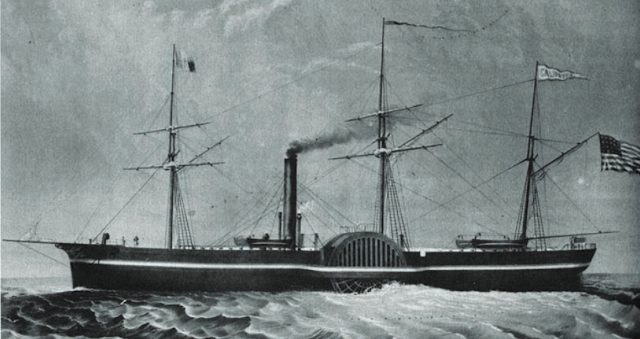
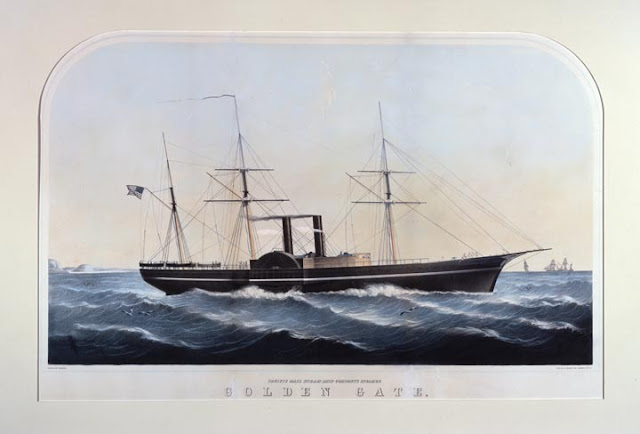
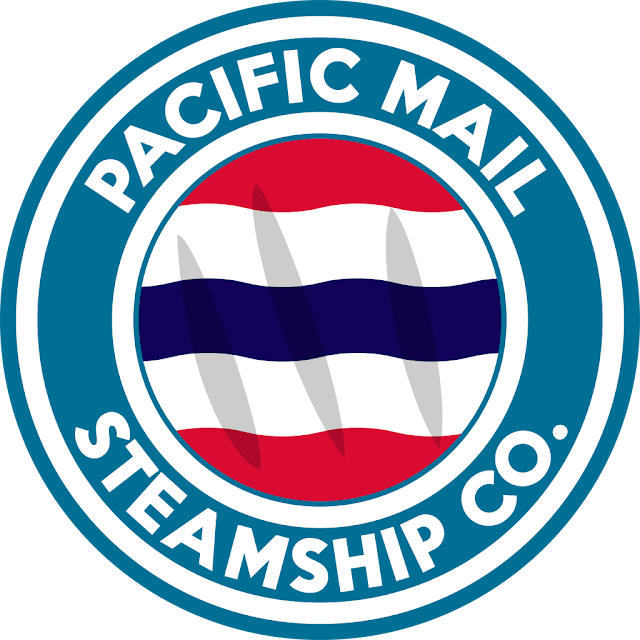

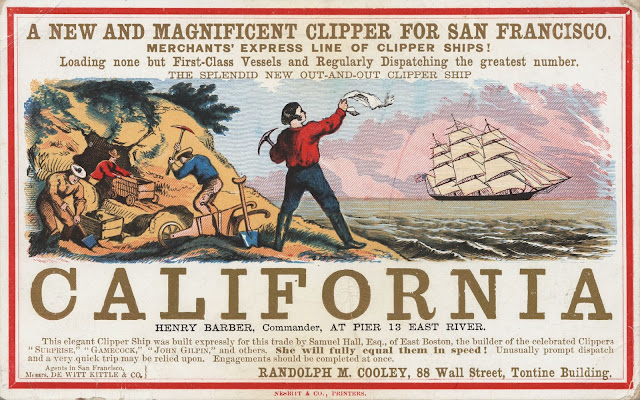
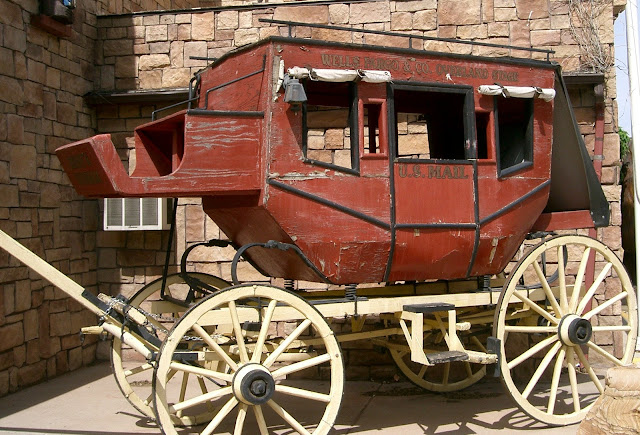
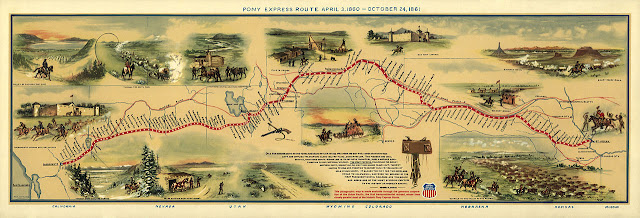








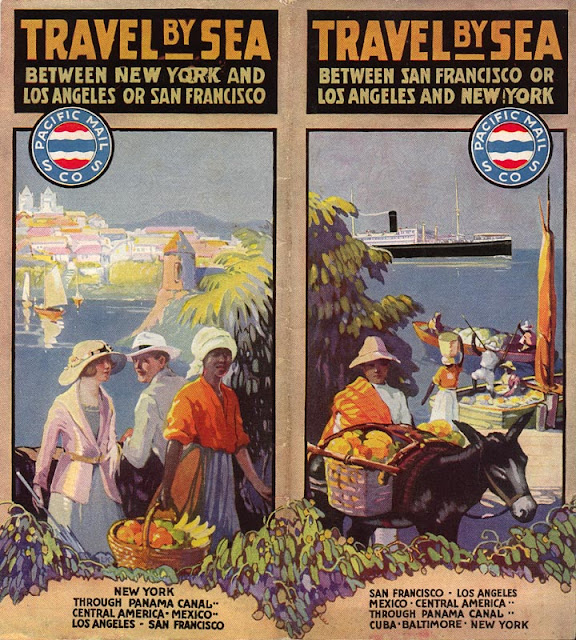

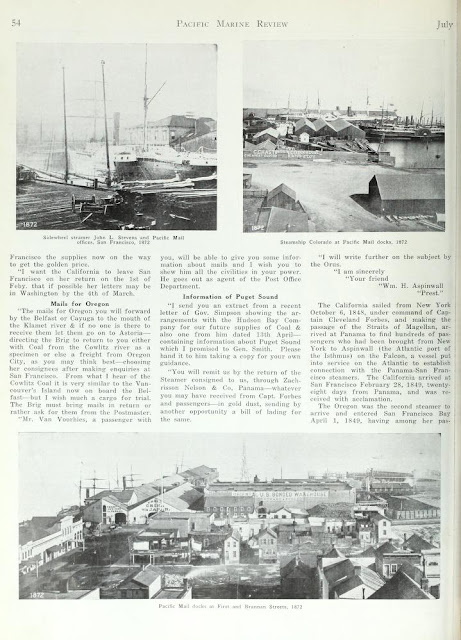

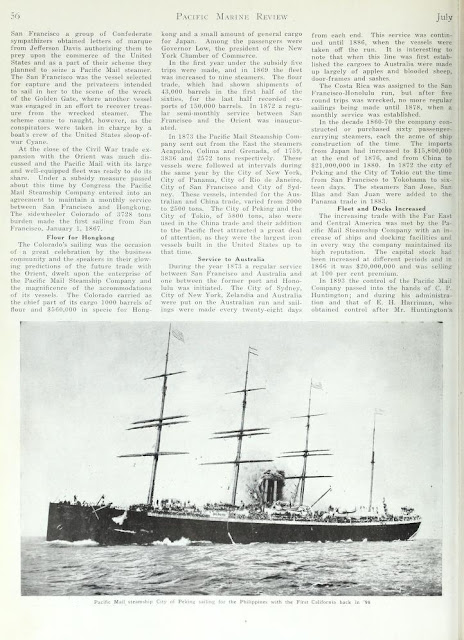


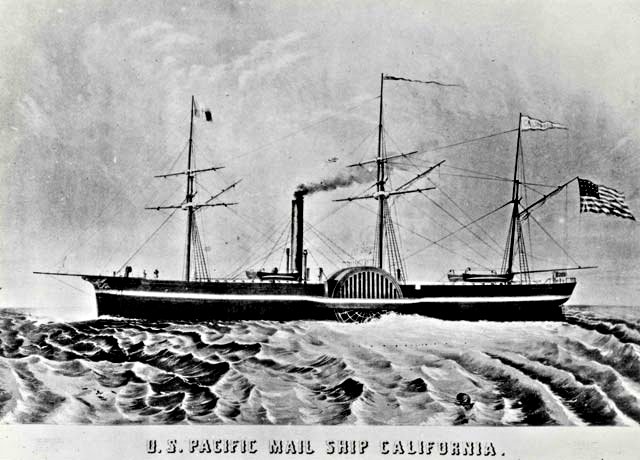


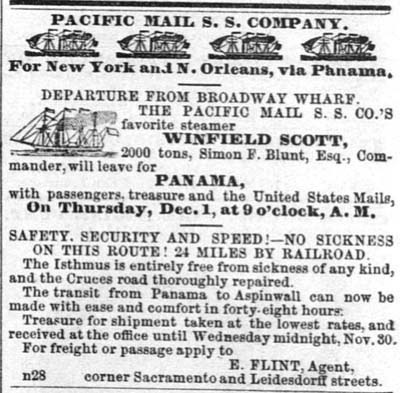
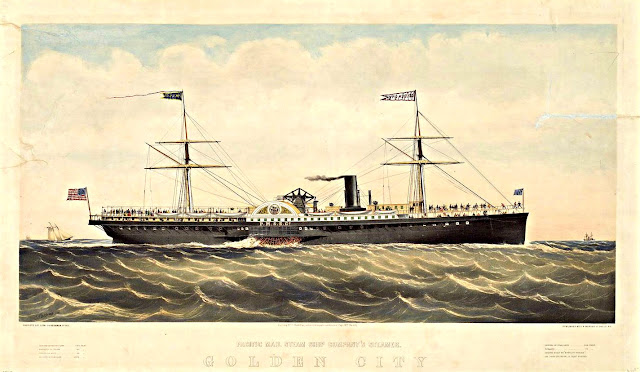

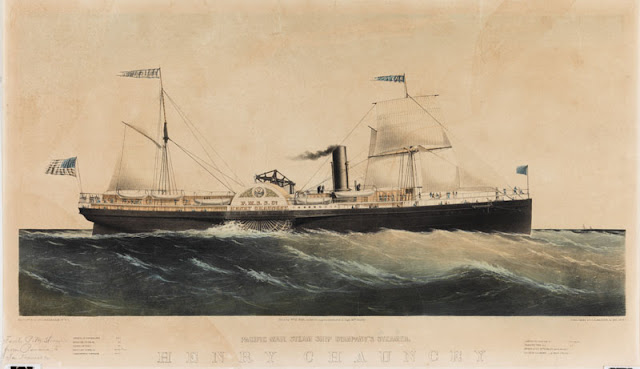
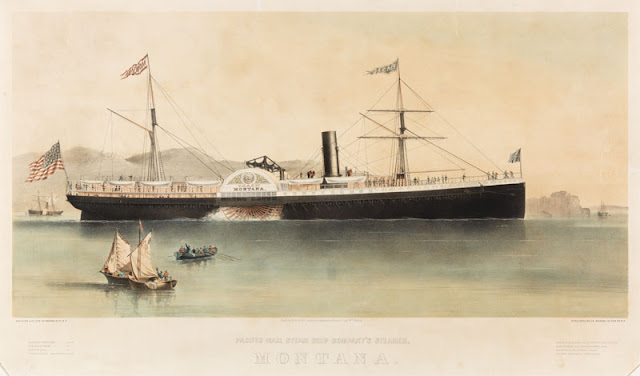


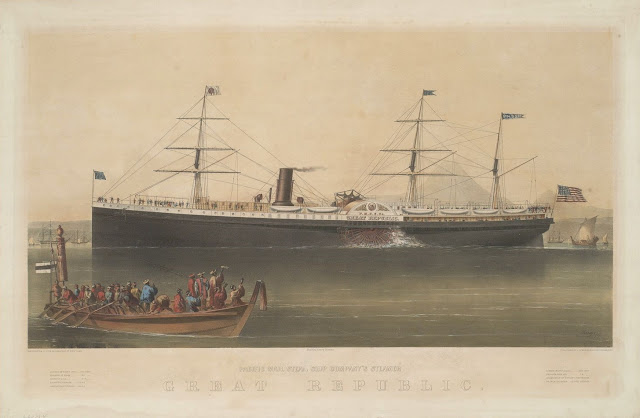



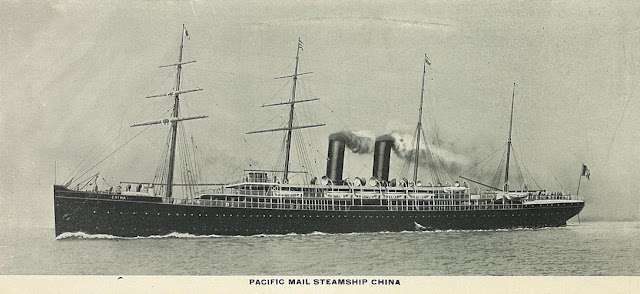

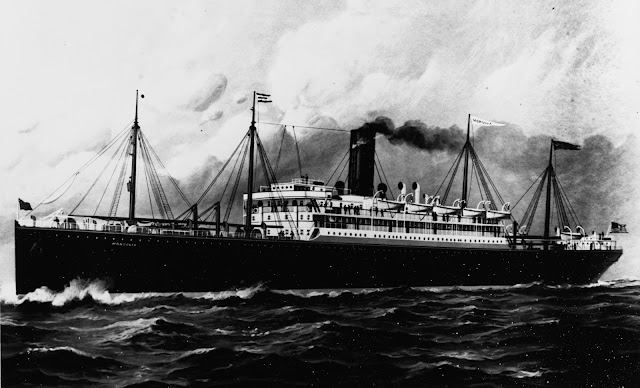
Thanks for sharing fabulous information.
ReplyDeleteWow! This is the perfect blog I was looking from past few days .Share great information about the topic of Cruise ship destination port things of historical interest in nassau This informative blog helps many readers with their decision-making regarding the situation. Great articles and will look forward for more amazing posts in the future.
ReplyDeleteThanks for sharing great information. Car Service Clayton
ReplyDelete